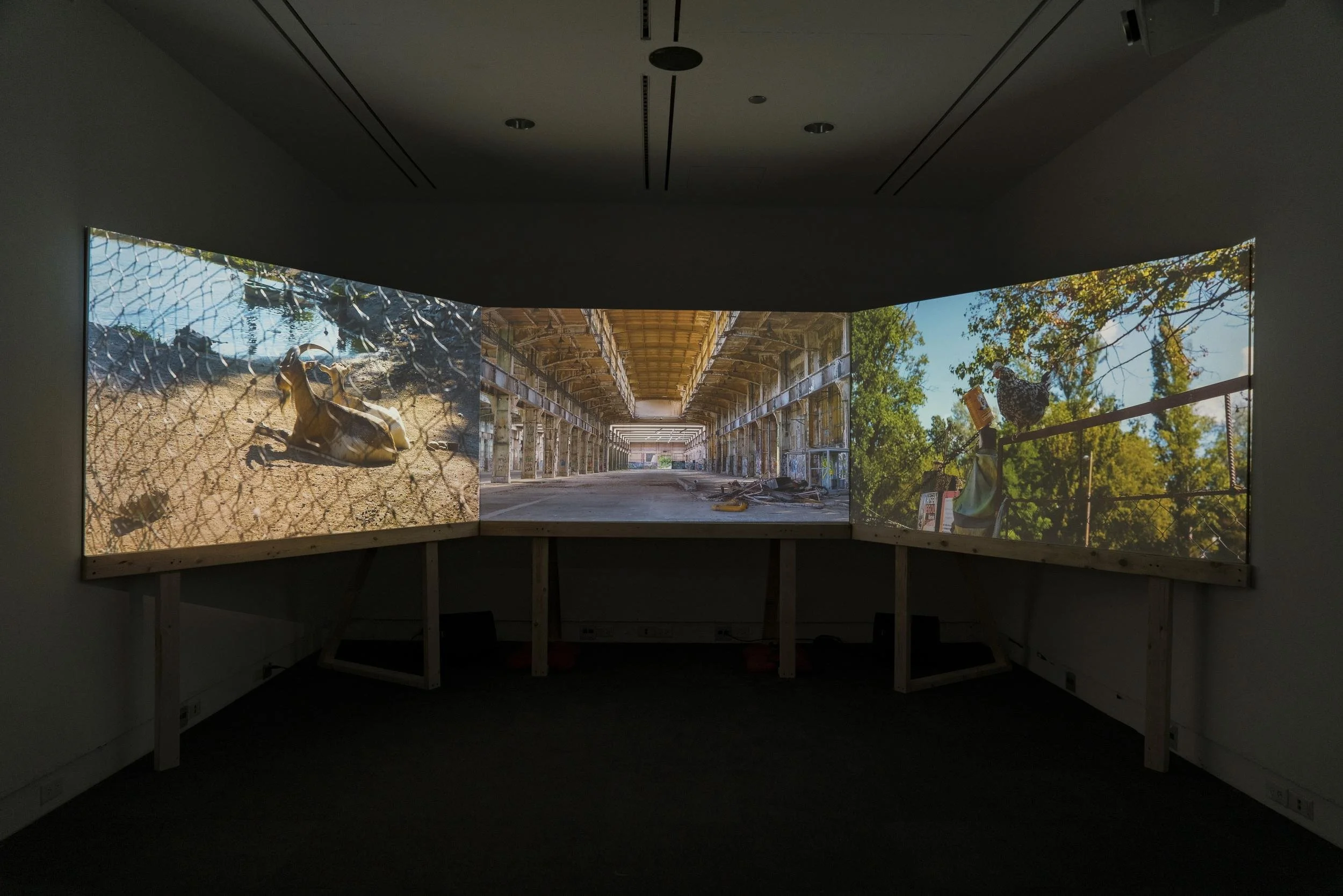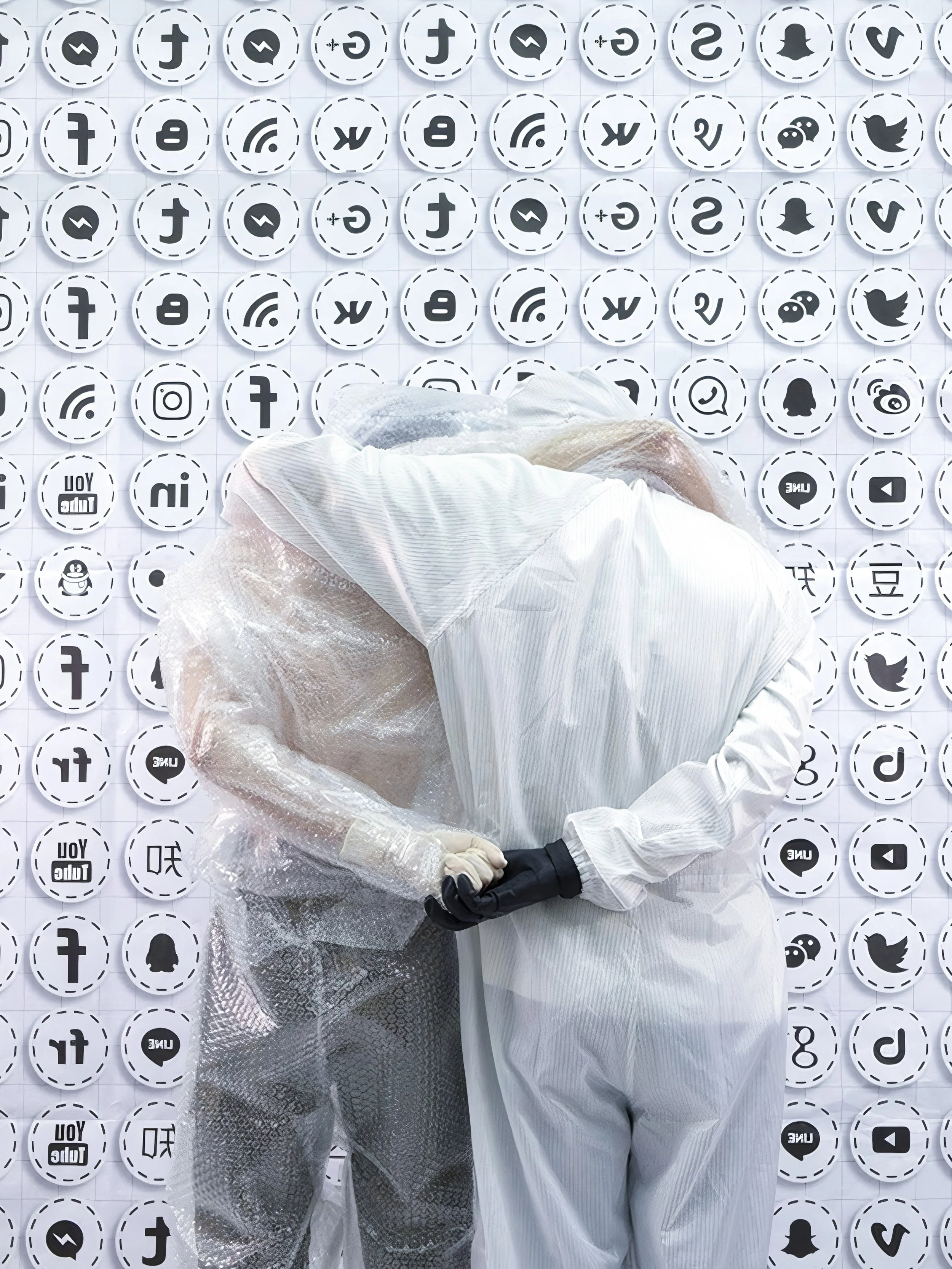10 Questions with Tianjiao Wang
Tianjiao Wang works with film, photography, and installation. She was born in Beijing and is currently based in Chicago. Around the same time, she encountered the works of Hong Sang-soo, Michael Snow, James Benning, and Chantal Akerman—filmmakers who introduced cinema into her world and profoundly shaped her practice, which has since been largely centred on moving images. In 2024, she earned her MFA from the University of Chicago and remained at the university for a one-year teaching fellowship. In 2023, she participated in the residency program at the Kimmel Harding Nelson Center for the Arts in Nebraska City, Nebraska, where she met fellow writers, Josie and Kira, forming a deep and lasting friendship. For Wang, connecting with her contemporaries and finding mutual recognition is both a rare and invaluable experience—an essential part of sustaining her artistic practice.
Tianjiao Wang - Portrait
ARTIST STATEMENT
Tianjiao Wang considers her films to be experimental documentaries. She anticipates that this medium can reveal subtle shifts and new perspectives in even the most ordinary things. She works both digitally and on celluloid (16mm and Super 8mm). Her subjects and inspirations largely stem from her mother. She sees life as a miracle and is both fascinated and obsessed with the act of bringing life into the world. She seeks to maximize the realization of her own existence while acknowledging the presence of things.
Untitled, photography, Dimensions variable, 2025 © Tianjiao Wang
INTERVIEW
Can you share with our readers the journey that led you to pursue an art career? When did you first realize you wanted to be an artist?
It must have been one day when I suddenly encountered art. I didn't know how to describe this mysterious thing—it reminded me of serious and noble literature. I thought of a skit from a Chinese New Year Gala that had delighted me for years. I thought of myself as a child, moved to tears while performing in a school chorus. I had a strong desire to understand this thing more clearly—this thing called art. I wanted to share it with the people I love the most. I felt that this was the best thing I could ever present, share, or appreciate. I wanted to be among those who make art, those mysterious people. I wanted to become serious, earnest, and devoted. I imagined myself doing scholarly work—carefully, with sincerity—and that's how it began.
You originally encountered cinema through filmmakers like Hong Sang-soo, Michael Snow, James Benning, and Chantal Akerman. What about their work resonated with you, and how do their influences manifest in your films?
These four individuals are very distinct, and I don't think there's much overlap between them. What I learned from Hong Sang-soo is that it's possible for an artist to find a muse—someone who inspires them to keep creating over time. People often talk about sustainable art practices, and this source of sustainability was something I first recognized through Hong Sang-soo. It can be a person, but it's not only about the person. Michael Snow gave me a strong—even somewhat brutal—impression. This feeling came from his film Wavelength. The first time I saw it, I was deeply struck by a filmmaker's commitment to exhaust a single gesture: the zoom-in. What stood out to me even more was that the film doesn't remain solely on the level of structuralist films. That final image—when the zoom arrives at a photograph that can no longer bear the pixelation—how is that not a kind of narrative? I always feel that to fully understand Benning's work, one can't only focus on his films—his works presented in gallery spaces are equally convincing. His art isn't confined to the cinema setting. His convincing conceptual drive makes me believe in everything he creates, no matter what he does. Chantal, for a while, became so popular—everyone around me was talking about her—that it actually made me a bit afraid. I'm not too concerned about whether people love her authentically or not. Well... maybe I am. Because she's so pure. The first film of hers I watched was actually her last one, No Home Movie. What I loved about it was her presence—both strong and fragile at the same time. I think that's something deeply real and precious. That a person can confront their emotions,instead of repressing them.
WILLIAMBABE, 16mm transfer to HD video, 10’29’’, 2024 © Tianjiao Wang
Your practice spans film, photography, and installation. How do you navigate these different mediums, and do you see them as extensions of each other or distinct forms of expression?
Each medium possesses its own inherent strengths and limitations. I regard it as a privilege to be able to navigate among various forms of expression, as the medium itself can often serve as a part of the message. While it is not necessary for every artist to engage directly with all mediums, I believe it is essential to cultivate an appreciation for their distinct possibilities—this, to me, constitutes a form of artistic professionalism. In my practice, the choice of medium is determined by the nature of each project. Certain works call for photography, others for film, and some require a more synthesized or interdisciplinary approach. On occasion, I encounter films that I feel might have been more effective as written works—a reflection of how each idea demands its own most suitable form. Ultimately, I believe it takes both attentiveness and time to introduce the appropriate medium within the context of a given project.
You recently completed your MFA at the University of Chicago and are now teaching there. How has academia influenced your artistic practice, and how do you balance being an artist and an educator?
I believe that artists are engaged in a very specific kind of scholarship. It's not any less serious than what conventional scholars do—just different. At the same time, I feel that theory, for an artist, must be translatable into some form of making; otherwise, it becomes excess. Being an educator, to me, is a gift. I find myself surrounded by students who are curious, passionate, eager to understand, and genuinely striving to do better. Their energy is contagious.
As someone who has lived between Beijing and Chicago, do you find that your sense of place influences your work? How do different cultural and physical landscapes shape your perspective as an artist?
Definitely! Beijing is home — all the feelings of familiarity. I love visiting Beijing's historic parks: the Temple of Heaven, Jingshan, Beihai, the Summer Palace. I can't imagine anyone not loving them. Talking about art in Beijing must be different from talking about it in Chicago — the communities are different, and the contexts are different. But many artists show their work in both places, and with globalization, if you think about it carefully, there are connections. Still, people's day-to-day lives have absolutely nothing in common. Even though you open your eyes to the same sun, that's about the only thing that's the same. I've met so many friends in Chicago. Each one of them is unique. I'm really grateful for these three years. I believe your artist community is what most shapes your work. Maybe that sounds like too much of a generalization, but how can you make art without talking about art? And once you're having those conversations, the people you talk with—your friends—largely shape how those discussions unfold.
From Elsewhere to Somewhere, 3 channel installation, 15’39’’, 2024 © Tianjiao Wang
From Elsewhere to Somewhere, HD video, 15’39’’, 2024 © Tianjiao Wang
You describe your films as experimental documentaries. How do you define this genre, and what draws you to it as a storytelling method?
In my view, if we consider the dictionary definition of "experiment"—a scientific procedure undertaken to make a discovery, test a hypothesis, or demonstrate a known fact—my understanding of experimental film does not diverge significantly from that. I believe that in the process of making art, I am similarly engaged in acts of discovery, in testing certain assumptions, or in revealing underlying truths. However, what often brings the greatest sense of delight is the emergence of an unforeseen effect—something that arises through the process of sustained experimentation. This might stem from the way a cut is handled, the way the camera is positioned, or the way an idea is developed. For me, the specific method matters less than the openness to experimentation itself.
Motherhood and the act of bringing life into the world are recurring themes in your work. What about these subjects captivates you, and how do you approach them through film?
I find myself unable to approach the theme of motherhood in the way someone like Stan Brakhage did—directly, confrontationally, even violently at times. I carry many hesitations, and I don't think I can express motherhood or the act of bringing life into the world in such a manner. It's not a dominant theme in my work, at least not overtly, but it's certainly something that recurs in my subconscious or lingers in the deeper layers of my mind. I've always believed that mothers are extraordinary. I can only speak for myself—I don't know where my own mother found the courage to become one. I've never asked her, though perhaps I should. When we've talked about the time around my birth, I've sensed—or perhaps imagined—that she herself might not have fully understood what it truly meant to decide to have a child, and then to actually go through with it.
To me, this isn't a subject that can be casually explored just because it seems interesting. It's something I may eventually have to face myself, and perhaps I'm preparing for that possibility, in my own quiet way. I don't think I've addressed it directly through film, because I don't feel that would be the most meaningful or honest way for me to engage with it. Just as I don't think Window Water Baby Moving is Brakhage's strongest work, I believe that for me, a more restrained, introspective approach feels truer.
You work with both digital and analogue formats like 16mm and Super 8mm. What determines your choice of medium for a particular project, and how does the materiality of film influence your process?
Because I live in a practical world—where budgets are finite—I can only shoot on 16mm when I have the resources to do so. Analog filmmaking is expensive, and precisely because of that, I usually approach it with a clear vision of what I want to capture. Digital, on the other hand, is more forgiving; I don't always need a concrete idea in advance—I can simplyenjoy the process of filming.
π, HD video, 07’19’’, 2022 © Tianjiao Wang
During your residency at the Kimmel Harding Nelson Center for the Arts, you strongly bonded with fellow writers Josie and Kira. How do these creative relationships shape your artistic practice, and do you see collaboration playing a role in your future work?
I feel that friendships like these create a deep sense of mutual understanding and resonance. Especially with Josie and Kira—we're contemporaries. We stepped out of school around the same time, entering society and continuing our creative work within the complexities of the real world. Each of us will inevitably encounter obstacles along the way, but it doesn't feel as daunting, because we've already found one another. We know that the others are out there, trying, persevering—and we hope that when we meet again, we'll all still be doing well.
Lastly, what projects are you currently working on, and what directions do you hope to explore in your future practice?
I am currently developing a new film titled Fall, though what compels me is less the seasonal or symbolic connotation and more the moment of imbalance—the act of yielding, of collapsing. I'm drawn to the notion of identity as something mutable and porous, capable of drifting inward toward the self or outward into entanglements with other lives, with the natural world, with alternate ways of being. I'm particularly interested in how the idea of queerness might exist as a gentle, unhurried presence—something that flows freely and finds resonance with all things, rather than resisting or confronting them. In this stage of the project, I find the role of the performer especially crucial. I believe that the presence and sensibility of the performer often determine whether a film is truly captivating.
Artist’s Talk
Al-Tiba9 Interviews is a promotional platform for artists to articulate their vision and engage them with our diverse readership through a published art dialogue. The artists are interviewed by Mohamed Benhadj, the founder & curator of Al-Tiba9, to highlight their artistic careers and introduce them to the international contemporary art scene across our vast network of museums, galleries, art professionals, art dealers, collectors, and art lovers across the globe.




















